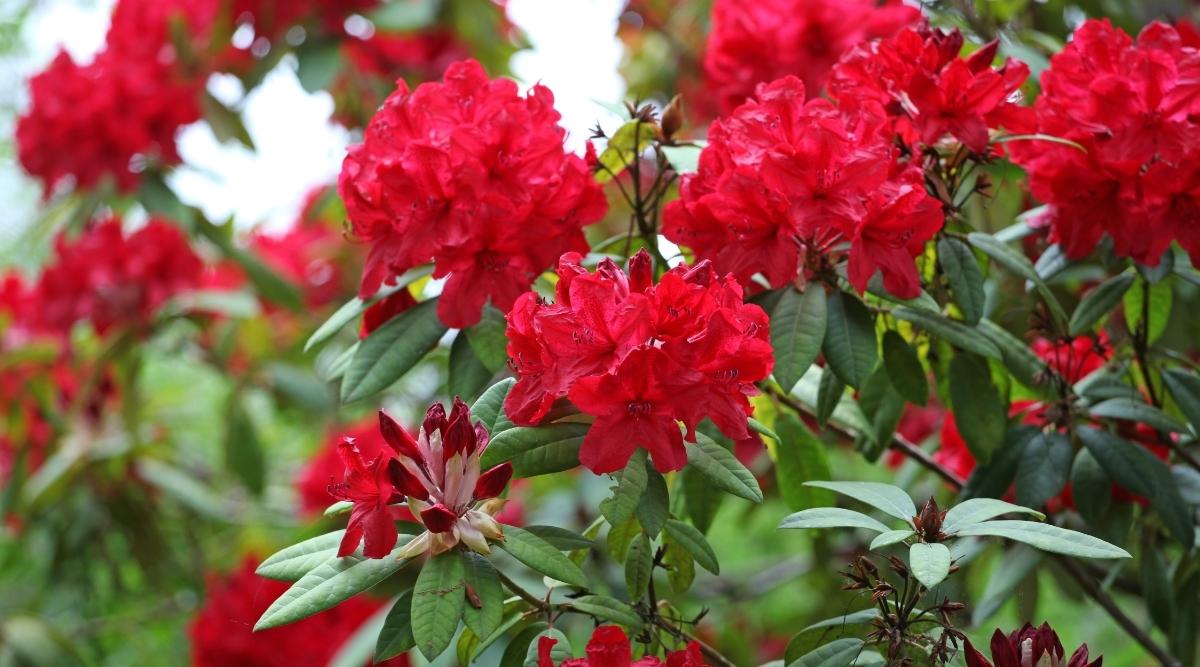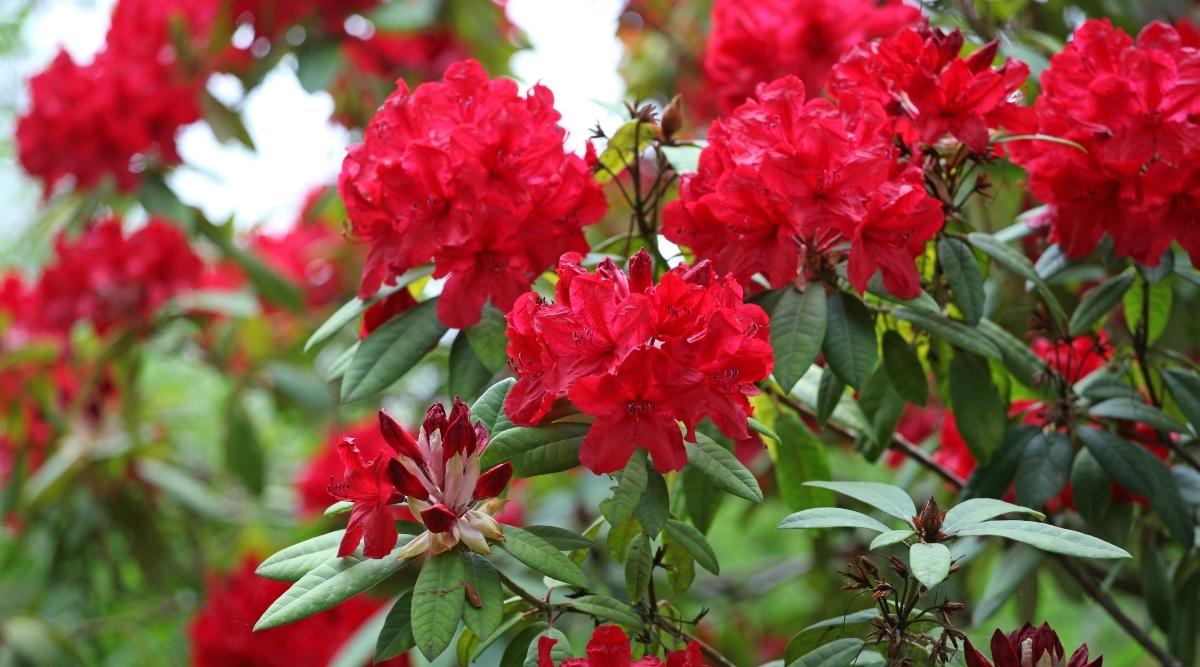

Rhododenron arboreum Sm.
|
Buransh is an edible flower belonging to the family Ericaceae. It is a good source of flavonoids, phenolic acids and anthocyanins such as Rutin, Kaempferol, Catechin, Gallic acid, Ellagic acid and Cyanidin-3-O-glucoside. The flower extract shows anti-oxidant, anti-cancer and anti-inflammatory activity by significantly decreasing lipid peroxidation and nitric oxide (NO) production, upregulates the expression of caspase enzymes which activates apoptosis and reduction of pro-inflammatory enzymes like protein kinase C, protein tyrosine kinases, phospholipase A2 and phosphodiesterases. Mode of Consumption : Fresh, fried and boiled |
| Plant Details | Agro-climatic Zone | Vernacular Names | Pictures |
| Scientific Name: Rhododenron arboreum Sm. Family: Ericaceae Durande Class: Magnoliopsida Order: Ericales Genus: Rhododenron L. Fruiting Season: February-May Parts: Flower |
|
Himachal Pradesh : Buransh |
 Flower  Flowers |
| Compound/Extract | Activity | Mode of Action | Marker/References |
| Methanolic extracts of flowers and leaves | Antioxidant | Methanolic extracts of flowers and leaves show a significant decrease in lipid peroxidation and NO production. | NO[1] |
| Ethyl acetate extract of Rhododendron arboreum | Anti-inflammatory | Ethyl acetate extract of Rhododendron arboreum decreases enzymes such as protein kinase C, protein tyrosine kinases, phospholipase A2 and phosphodiesterases. | Protein kinase C, protein tyrosine kinases, phospholipase A2 and phosphodiesterases[3] |
| Major Class | Metabolites (Content of bioactives: mg/100g Fresh Weight) |
| Anthocyanin | Cyanidin-3-O-glucoside: 6.59mg/100g[2] |
| Carboxylic Acid | Gallic acid: 1.51mg/100g[1] |
| Flavonoid | Catechin: 11.75mg/100g, Kaempferol: 0.88mg/100g, Rutin: 6.54[1] |
| Phenolic acid | Ellagic acid: 14.85mg/100g[1] |
| Effect | Observation | DOI |
| Disease | Formulation | Reference | Author | TKDL |
| Information from Wealth of India | Reference |
|
CSIR(1972).The Wealth of India, Raw materials,Vol-IX, P.13, New Delhi, India |
| CSIR-North East Institute of Science and Technology, Jorhat-6, Assam, India
CSIR-Institute of Himalayan Bioresource Technology, Palampur-61,Himachal Pradesh, India |